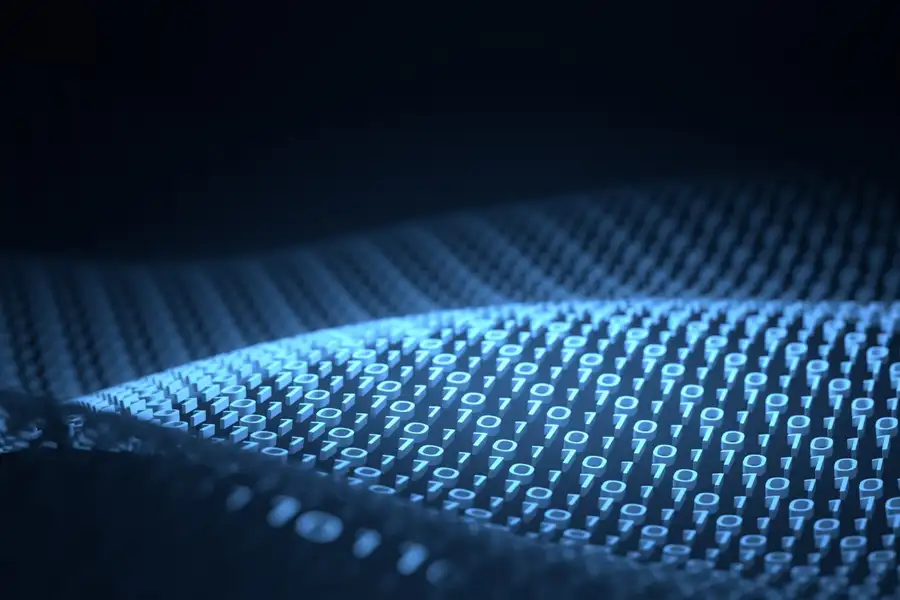Record-breaking number of qubits entangled in a quantum computer (New Scientist)
A group of 51 superconducting qubits have been entangled inside a quantum computer, not just in pairs but in a complex system that entangles each qubit to every other one
By Karmela Padavic-Callaghan

Researchers used the Zuchongzhi quantum computer to entangle dozens of qubits simultaneously (JLStock/Shutterstock)
A record-breaking number of quantum bits, or qubits, have been proven to be entangled inside a quantum computer. There have been previous attempts to achieve this with a relatively large number of qubits, but none have been able to verify the entanglement.
For two entangled quantum particles, changing some property of one automatically changes that same property of the other. For a larger number of particles, not only can each pair be entangled, but all of them can be entangled with each of the others as well.
Researchers worked out how to entangle three or four particles of light in this more complex way in the late 1980s. More recently, as many as 27 qubits have been entangled in quantum computers. Now, Xiao-bo Zhu at the University of Science and Technology of China and his colleagues have pushed that number to 51 qubits.
The researchers used the Zuchongzhi quantum computer, which was previously used to solve complex problems so quickly that researchers claimed that it had reached quantum supremacy – meaning it was unbeatable by any conventional supercomputer. Zuchongzhi contains 66 superconducting qubits, which are tiny loops of a material that conducts electricity without losses. The researchers controlled the state of the qubits with microwaves, and tuned how different qubits interacted with each other by hitting them with pulses of magnetic fields.
They used these controls to apply quantum logic gates – sequences of operations that change the quantum states of the qubits – to many pairs of qubits simultaneously. In this way, they entangled 51 qubits arranged in a line and 30 qubits arranged in a two-dimensional plane, a record number in each case.
“This success stems from meticulous calibration and well-considered design choices for the device,” says Nathan Lacroix at the Swiss Federal Institute of Technology in Zurich. While this speaks to Zuchongzhi’s power, he says that other researchers have previously created similar systems with as many as 57 qubits, but could not verify that each was entangled with every other qubit.
“Entanglement is one of the key differences between conventional computers and quantum computers, and it’s a key ingredient in quantum algorithms. Demonstrating large numbers of entangled qubits is then an important benchmark for a quantum computer,” says Charles Hill at the University of New South Wales in Australia. Hill and his colleagues attempted a similar feat with a 65-qubit device but could only prove that the set of qubits were entangled in pairs, not as an entire group.
“We had to develop a new method for witnessing entanglement,” says Zhu. This involved a clever choice of a minimal set of measurements that gathered enough information to characterise what the qubits were doing without taking too much time or computational resources.
Christian Andersen at Delft University of Technology in the Netherlands says that while it is not immediately clear how 51 entangled qubits can be used in computations, the researchers achieved an impressive technical accomplishment and created a very complex system that is itself interesting, as it has no counterpart in classical physics. “This work could enlighten other researchers about what we can actually do with superconducting qubits,” he says.
Journal reference: Nature DOI: 10.1038/s41586-023-06195-1
(From New Scientist)
Back
